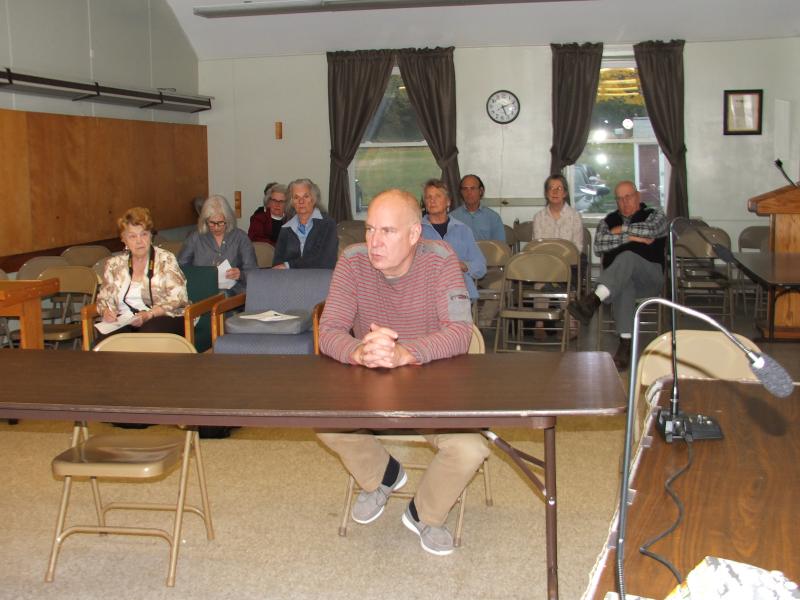The Oct. 19 Historic Preservation Commission meeting was billed as an open house so the people of Wiscasset could understand what the commission does and how it goes about its work.
Attendees wanted to know was how to keep the historic preservation ordinance alive after the Nov. 7 vote. Article 4 of Wiscasset’s warrant asks, “Shall the Town enact an ordinance entitled “An Ordinance Repealing Section 10, the Historic Preservation Ordinance and the Historic Overlay Map, of the Town of Wiscasset’s Zoning Ordinance, thereby ratifying the procedures used for such repeal?”
Residents who want the ordinance repealed would vote yes, those who want the ordinance to remain would vote no.
Those at the open house were in favor of historic preservation and did not want to see the ordinance repealed. All suggested it could be tweaked. Kim Dolce said it was difficult to identify what properties were included based on the overlay maps. Others noted that some historic properties were not in the district, while non-contributing structures in the district had to come before the commission.
Selectmen voted 3-2 to abolish the ordinance, citing complaints from residents. Except for two notable concerns – the issue of a fence erected on a property on Fort Hill Street by a legally bind woman who said she needed a fence to contain her dogs and prevent her from falls, and the issue of a metal roof for the town library to protect historic documents stored on the third floor – most of the certificates of appropriateness went through in one or two meetings. But now, without a planner to do office support, and without a budget to provide funding for notification, it has been difficult for the commission to perform some of its duties, including the revamping of the ordinance which does have some inconsistencies and confusing sections, Chair John Reinhardt said.
Without a planner, the commission has also not been able to move forward with a plan to become a Certified Local Government, a state designation which would allow the town to obtain grants for historic preservation. Among other things, a CLG requires a complete survey of the historic district to identify both contributing and non-contributing structures. Once that is done, the town could apply for grant funding to help people interested in the preservation of their properties fund some aspects of the work.
While the planning budget has been restored, at least for now, another warrant article seeks to use it for tax relief instead. Article 5 would zero out the planning budget on Nov. 30. The question stems from a citizens’ petition. Selectmen voted 5-0 to place the article on the warrant.
Open house attendees said they would make yard signs urging a “No on 4” vote. Most areas in the town are not covered by the ordinance, but according to Dolce, those that are pay a higher property tax than those that are not, and are responsible for most of the economic development in town.
“The Historic District is the economic engine,” she said.
The commission also approved the certificate of appropriateness by Bruce Benner for the property at 41 Water St. Currently, it is used as office and residential space, but when complete, it will be six apartments, all one-bedroom except for one on the third floor, which might be two bedrooms. All units will have a balcony overlooking the river, and be heated by energ- efficient heat pumps. Benner proposed working on the river side of the property first, and then coming back to obtain a new certificate when he can afford to refinish the front of the property facing Water Street.
The issue of the demolition of the barn at 4 High Street, facing Lee Street, a prior matter before the commission, did not arise. The barn was demolished as an emergency measure after the owners were told it could not be saved and was unsafe. The owner plans a restoration but that has not yet come before the commission.



























